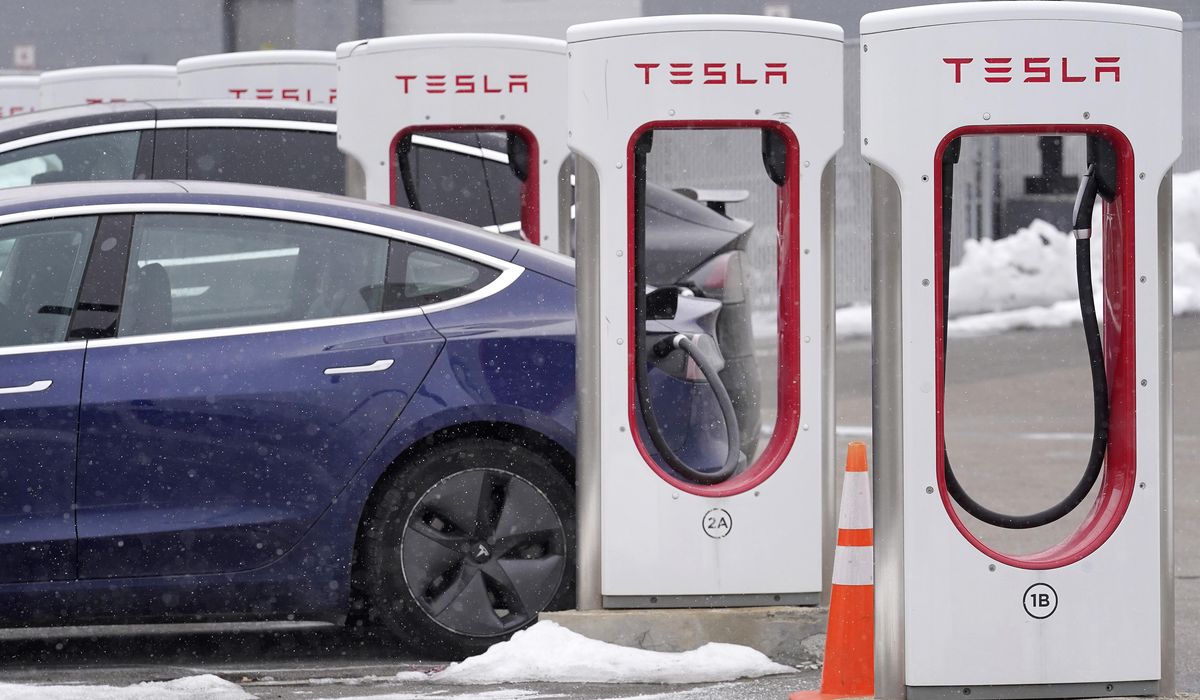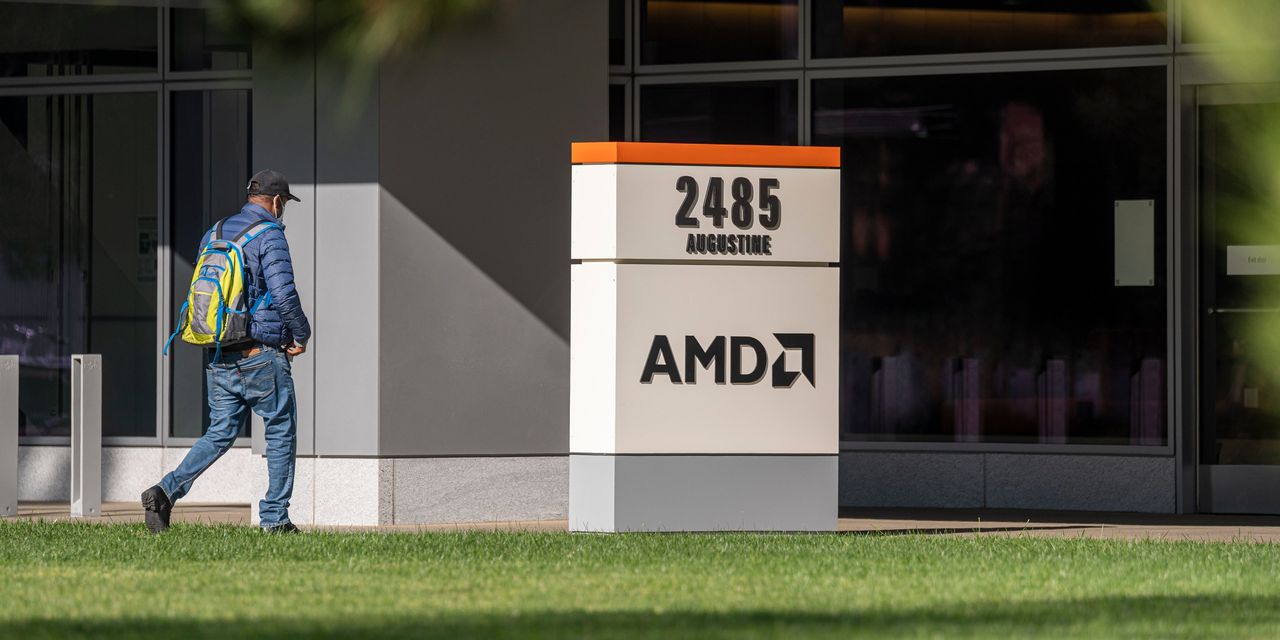
Electric vehicle manufacturer Tesla said it would change its business model and make its charging stations open to autos from all manufacturers, not just its own cars, as Congress put the finishing touches on its infrastructure bill this fall.
Platform neutrality is a key requirement of the infrastructure law, which allocates $7.5 billion to start the construction of a broad network of charging ports. The Biden administration’s goal is to transition the nation’s roadways away from fossil fuels.
Tesla‘s move signals a hope to have an inside track to collect a large chunk of the taxpayer money.
Tesla did not respond to requests for comment.
While planners draw the contours of how the $7.5 billion will be spent, analysts are speculating about who will get a piece of the action.
Leading candidates include auto manufacturers and utility companies, which have deep pockets and the relationships and know-how to build charging stations.
Green energy advocates say the details are less important than the symbolism of a $7.5 billion infusion of taxpayer money. They hope the investment gives the public a sense of a lasting commitment to end America’s gas-guzzling habit.
“It’s like a chicken or the egg. People are not going to feel comfortable buying electric cars if there aren’t more charging stations,” said Michael D. Farkas, the founder and chief executive officer of Blink Charging. His company is building places for drivers to recharge electric cars across the country.
Thomas J. Pyle, president of the free market Institute for Energy Research, said the government should have left the chickens and eggs alone. The companies that hope to benefit from the auto industry’s transformation should pick up the tab, he said.
“If it really is the emerging technology, the market signals should be there for the Teslas to invest in the infrastructure,” Mr. Pyle said.
He said government mandates could warp decision-making by attempting to pick winners from the technological options available. Consumer demand, he said, should drive where and what kinds of chargers are built.
The legislation will provide funding to deploy electric vehicle chargers along highway corridors to facilitate long-distance travel and within communities to provide convenient charging where people live, work and shop, a White House fact sheet said.
Many of the decisions have yet to be made.
The $7.5 billion was tucked into the $1.2 trillion infrastructure bill President Biden signed last month. The language doesn’t specify when, where and how the network will be built other than requiring government-funded charging stations to be publicly accessible and not proprietary.
The Energy Department, and perhaps states that administer most of the federal money, also will have to decide on a specific type of station. Level 2 hookups take hours to top off a battery, but DC fast chargers can fill a battery in as little as an hour.
The Energy Department lists about 45,000 public charging stations, with more than 120,000 ports, in the U.S.
About 41,000 of the stations have Level 2 hookups, and 5,600 have DC fast chargers.
Carla Bailo, president and CEO of the nonprofit Center for Automotive Research, said it will take further study to figure out the best way to use the money.
“Don’t rush it. Do it right,” she said.
Stores such as Whole Foods and Walmart are partnering with Blink and other companies to install spots where drivers can recharge electric vehicles while they shop.
Most owners recharge their electric vehicles at home overnight. A full battery can take a car about 200 miles. Unless they make long trips, owners are likely to use their chargers at home.
If fast-charging stations built to reassure drivers sit empty, the sight will be a “white elephant” for the industry, Mr. Farkas said.
The Energy Department estimates that 40% of U.S. drivers don’t have garages or other places to plug in their cars at home, said Edward Sanchez, a senior automotive analyst with global consulting firm Strategy Analytics.
Mr. Sanchez and Mr. Farkas said it may be more important to subsidize stations that can recharge vehicles in two to six hours.
Mr. Farkas said federal and local governments have been moving away from granting money upfront to build charging stations and instead are reimbursing companies only after installation.
He acknowledged that taxpayer dollars could go to companies that otherwise would have funded charging locations but the infrastructure money will allow them to build even more.
The U.S. has lagged behind European and Asian countries in developing electric vehicles, and companies worldwide have been investing billions of dollars to meet demand, Ms. Bailo said. Virtually every automobile manufacturer is developing electric vehicles and would benefit from more charging stations, she said.
Electric vehicles currently cost more to produce, so manufacturers do not make as much of a profit from them, Ms. Bailo said. The production costs are expected to change in the long term as auto companies make the transition.
Some gasoline companies are installing battery rechargers and transforming into “energy stations,” Ms. Bailo said.
Whichever companies end up winning government money, critics say the losers are taxpayers — particularly those on the lower economic rungs for whom city buses and subways are more realistic modes of transportation than $45,000 Teslas.
“Democrats are preparing to spend billions of dollars on electric vehicles and EV infrastructure, a taxpayer-funded gift to the wealthy,” said Jack Heretik, a spokesman for Republicans on the House Energy and Commerce Committee. “The Democrats’ EV agenda is a transfer of wealth from American workers who can’t afford EVs to the rich.”
Mr. Biden hasn’t let those criticisms dash his dreams.
“We’re going to build out the first-ever national network of charging stations all across the country — over 500,000 of them. … So you’ll be able to go across the whole darn country, from East Coast to West Coast, just like you’d stop at a gas station now,” he said last month.
An analysis by Alix Partners, a global business consulting firm, suggests the president’s dreams are not big enough. Alix found that if the popularity of electric vehicles continues at the rate it is growing, the number of charging spots in the nation will have to increase to 1.5 million in 2030.
Analysts figure that when the lower price of electricity is taken into account, the costs of buying and owning an electric vehicle could be roughly the same as having one that runs on an internal combustion engine.
Akshay Singh, an industrial and automotive industries principal with PricewaterhouseCoopers U.S., said Democrats can make the case that their proposed $12,500-per-vehicle tax credit in the looming budget bill should be spent on charging stations because electric vehicles will become more affordable.
He said, “$7.5 billion is not much, but it’s a good start.”








